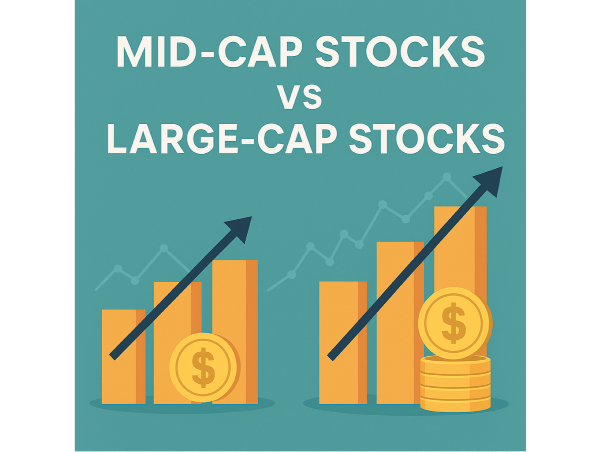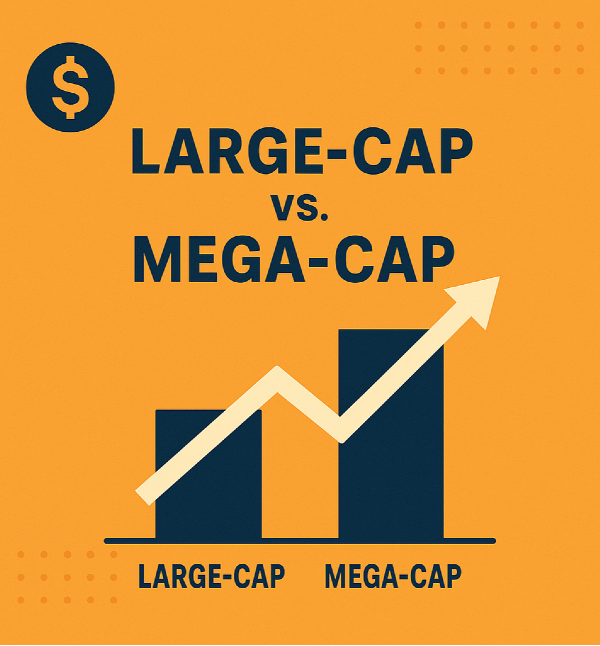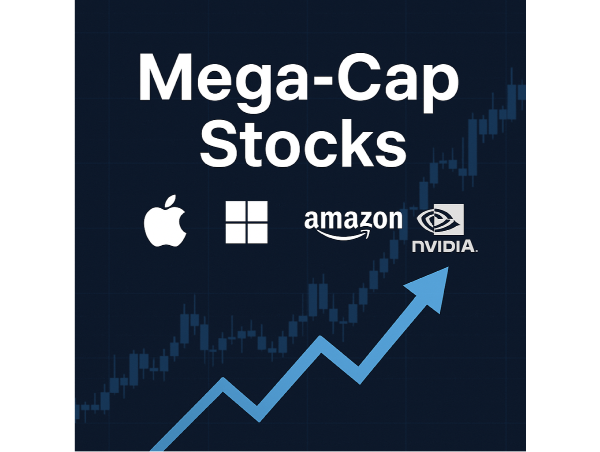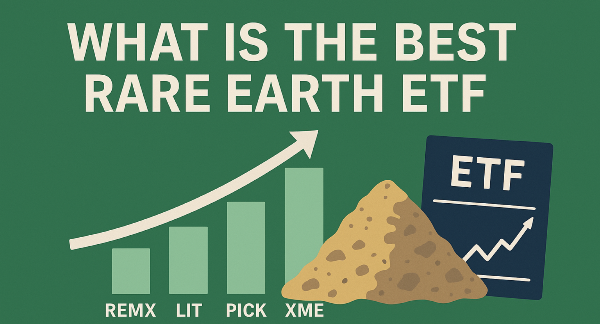Introduction
Exchange-traded funds (ETFs) provide investors with diversified exposure to various asset classes, including stocks, bonds, and commodities. One common method of structuring ETFs is market capitalization weighting, where holdings are allocated based on the size of each company's market value. Large-cap weighted ETFs focus on companies with the highest market capitalizations, ensuring that industry leaders have a significant influence on fund performance. These ETFs are widely used in portfolio management due to their stability, liquidity, and ability to track major indices such as the S&P 500. Investors rely on large-cap weighted ETFs to achieve long-term growth while minimizing volatility, making them a cornerstone of diversified investment strategies.
What Are Large-Cap Weighted ETFs?
Large-cap weighted ETFs allocate a higher percentage of their holdings to companies with the largest market capitalizations. This structure ensures that industry leaders have a significant influence on fund performance, making these ETFs a popular choice for investors seeking stability and long-term growth. Unlike equal-weight ETFs, which distribute holdings evenly across all components, large-cap weighted ETFs reflect the natural market capitalization distribution of their underlying index.
Equal-weight and sector-focused ETFs differ from large-cap weighted ETFs in their allocation strategies. Large-cap weighted ETFs provide a balanced approach by maintaining exposure to leading companies while ensuring diversification across various industries. Market-cap weighting in ETF construction offers several advantages, including lower turnover rates and cost efficiency.
Since large-cap weighted ETFs naturally adjust their allocations based on market movements, they require less frequent rebalancing compared to equal-weight ETFs. Large-cap weighted ETFs benefit from the stability of their top holdings, as larger companies tend to have lower volatility and stronger financial resilience.
How Large-Cap Weighting Impacts ETF Performance
Large-cap weighted ETFs are significantly influenced by their top holdings, as the largest companies in the index receive the highest allocation. This concentration can lead to strong returns when dominant stocks perform well, but it also increases volatility when these companies experience downturns. Technology giants such as Apple and Microsoft often hold substantial weight in large-cap ETFs. Equal-weight ETFs distribute holdings evenly across all components, reducing reliance on a few dominant stocks. This approach can lead to higher returns when smaller companies outperform, but it also introduces greater volatility.
Large-cap weighted ETFs, on the other hand, provide stability by emphasizing established companies with strong financial positions. Historical trends indicate that market-cap weighted ETFs have generally outperformed equal-weight ETFs over long periods, particularly during bull markets. The dominance of mega-cap stocks in recent years has contributed to strong returns for large-cap weighted funds.
Major Large-Cap Weighted ETFs in the Market
Large-cap weighted ETFs such as SPY, VOO, and IVV are among the most widely traded funds, offering investors exposure to the largest companies in the U.S. stock market. These ETFs track the S&P 500 index, ensuring broad diversification across multiple sectors while maintaining a focus on industry leaders. SPY is the oldest and most liquid S&P 500 ETF, making it a preferred choice for institutional investors. VOO and IVV, managed by Vanguard and iShares respectively, provide similar exposure but with lower expense ratios, making them attractive for long-term investors seeking cost efficiency.
Analyzing the holdings and expense ratios of these ETFs reveals key differences. Despite tracking the same index, slight variations in fund structure and trading spreads can impact returns. The top holdings in these ETFs include mega-cap stocks such as Apple, Microsoft, and Amazon, which collectively account for a significant portion of the fund’s weightings.
Benefits of Investing in Large-Cap Weighted ETFs
Large-cap weighted ETFs provide stability and lower volatility compared to smaller-cap ETFs, making them a preferred choice for conservative investors. These funds allocate a higher percentage of their holdings to well-established companies with strong financial positions, reducing the impact of market fluctuations. Its stability makes large-cap weighted ETFs an attractive option for those seeking consistent returns while minimizing risk exposure.
Diversification is another key advantage of large-cap weighted ETFs, as they provide broad exposure to industry leaders across multiple sectors. This enhances portfolio resilience, allowing investors to benefit from the growth of leading companies while mitigating sector-specific risks. Dividend potential and long-term growth opportunities further strengthen the appeal of large-cap weighted ETFs.
Risks and Limitations of Large-Cap Weighted ETFs
Large-cap weighted ETFs often face concentration risk due to their reliance on a few dominant stocks. Since these funds allocate a higher percentage of their holdings to the largest companies in the index, their performance is heavily influenced by a handful of stocks.
Historical trends show that market-cap-weighted indices have reached extreme concentration levels, surpassing previous highs seen during the dot-com bubble and the Nifty Fifty era. Balancing risk and reward in large-cap weighted ETFs requires careful portfolio management. Understanding macroeconomic trends can help investors anticipate market shifts and adjust their holdings.
Sector Allocations Within Large-Cap Weighted ETFs
Large-cap weighted ETFs allocate holdings across various sectors, with technology, healthcare, and financial services often receiving the highest weightings. These weightings reflect the dominance of mega-cap stocks such as Apple, Microsoft, and JPMorgan Chase, which significantly influence ETF performance. Sector allocations vary across different funds, but technology remains the largest sector. The dominance of technology, healthcare, and financial sectors in large-cap weighted ETFs is driven by their market capitalization and economic impact. Investors often monitor sector weightings to assess risk exposure and potential growth opportunities. Economic cycles significantly affect sector performance within large-cap weighted ETFs.
How to Choose the Right Large-Cap Weighted ETF
Choosing the right large-cap weighted ETF requires careful evaluation of expense ratios, holdings, and fund objectives. Expense ratios play a crucial role in determining long-term returns, as lower fees help maximize investment gains. ETFs such as VOO and IVV offer competitive expense ratios of 0.03%, making them cost-effective options for buy-and-hold investors. Holdings within these ETFs vary slightly. Understanding fund objectives is essential, as some ETFs prioritize dividend income while others focus on growth-oriented strategies.
Tracking differences and liquidity concerns are important considerations when selecting a large-cap weighted ETF. Funds like SPY, known for their high liquidity, provide seamless trading opportunities, making them suitable for active investors. Risk tolerance plays a key role in determining allocation strategies.
Conclusion
Large-cap weighted ETFs provide investors with diversified exposure to industry-leading companies, ensuring stability and long-term growth potential. Their reliance on market capitalization weighting allows them to track major indices effectively, benefiting from the financial strength of dominant stocks. While these ETFs offer lower volatility and dividend opportunities, investors must consider concentration risk and sector allocations when structuring their portfolios.
Understanding expense ratios, liquidity, and macroeconomic trends helps optimize investment decisions, allowing for a balanced approach to risk and reward. As market conditions evolve, large-cap weighted ETFs remain a key component of diversified portfolios, supporting financial security and sustainable wealth accumulation.




























Introduction
Exchange-traded funds (ETFs) provide investors with diversified exposure to various asset classes, including stocks, bonds, and commodities. One common method of structuring ETFs is market capitalization weighting, where holdings are allocated based on the size of each company's market value. Large-cap weighted ETFs focus on companies with the highest market capitalizations, ensuring that industry leaders have a significant influence on fund performance. These ETFs are widely used in portfolio management due to their stability, liquidity, and ability to track major indices such as the S&P 500. Investors rely on large-cap weighted ETFs to achieve long-term growth while minimizing volatility, making them a cornerstone of diversified investment strategies.
What Are Large-Cap Weighted ETFs?
Large-cap weighted ETFs allocate a higher percentage of their holdings to companies with the largest market capitalizations. This structure ensures that industry leaders have a significant influence on fund performance, making these ETFs a popular choice for investors seeking stability and long-term growth. Unlike equal-weight ETFs, which distribute holdings evenly across all components, large-cap weighted ETFs reflect the natural market capitalization distribution of their underlying index.
Equal-weight and sector-focused ETFs differ from large-cap weighted ETFs in their allocation strategies. Large-cap weighted ETFs provide a balanced approach by maintaining exposure to leading companies while ensuring diversification across various industries. Market-cap weighting in ETF construction offers several advantages, including lower turnover rates and cost efficiency.
Since large-cap weighted ETFs naturally adjust their allocations based on market movements, they require less frequent rebalancing compared to equal-weight ETFs. Large-cap weighted ETFs benefit from the stability of their top holdings, as larger companies tend to have lower volatility and stronger financial resilience.
How Large-Cap Weighting Impacts ETF Performance
Large-cap weighted ETFs are significantly influenced by their top holdings, as the largest companies in the index receive the highest allocation. This concentration can lead to strong returns when dominant stocks perform well, but it also increases volatility when these companies experience downturns. Technology giants such as Apple and Microsoft often hold substantial weight in large-cap ETFs. Equal-weight ETFs distribute holdings evenly across all components, reducing reliance on a few dominant stocks. This approach can lead to higher returns when smaller companies outperform, but it also introduces greater volatility.
Large-cap weighted ETFs, on the other hand, provide stability by emphasizing established companies with strong financial positions. Historical trends indicate that market-cap weighted ETFs have generally outperformed equal-weight ETFs over long periods, particularly during bull markets. The dominance of mega-cap stocks in recent years has contributed to strong returns for large-cap weighted funds.
Major Large-Cap Weighted ETFs in the Market
Large-cap weighted ETFs such as SPY, VOO, and IVV are among the most widely traded funds, offering investors exposure to the largest companies in the U.S. stock market. These ETFs track the S&P 500 index, ensuring broad diversification across multiple sectors while maintaining a focus on industry leaders. SPY is the oldest and most liquid S&P 500 ETF, making it a preferred choice for institutional investors. VOO and IVV, managed by Vanguard and iShares respectively, provide similar exposure but with lower expense ratios, making them attractive for long-term investors seeking cost efficiency.
Analyzing the holdings and expense ratios of these ETFs reveals key differences. Despite tracking the same index, slight variations in fund structure and trading spreads can impact returns. The top holdings in these ETFs include mega-cap stocks such as Apple, Microsoft, and Amazon, which collectively account for a significant portion of the fund’s weightings.
Benefits of Investing in Large-Cap Weighted ETFs
Large-cap weighted ETFs provide stability and lower volatility compared to smaller-cap ETFs, making them a preferred choice for conservative investors. These funds allocate a higher percentage of their holdings to well-established companies with strong financial positions, reducing the impact of market fluctuations. Its stability makes large-cap weighted ETFs an attractive option for those seeking consistent returns while minimizing risk exposure.
Diversification is another key advantage of large-cap weighted ETFs, as they provide broad exposure to industry leaders across multiple sectors. This enhances portfolio resilience, allowing investors to benefit from the growth of leading companies while mitigating sector-specific risks. Dividend potential and long-term growth opportunities further strengthen the appeal of large-cap weighted ETFs.
Risks and Limitations of Large-Cap Weighted ETFs
Large-cap weighted ETFs often face concentration risk due to their reliance on a few dominant stocks. Since these funds allocate a higher percentage of their holdings to the largest companies in the index, their performance is heavily influenced by a handful of stocks.
Historical trends show that market-cap-weighted indices have reached extreme concentration levels, surpassing previous highs seen during the dot-com bubble and the Nifty Fifty era. Balancing risk and reward in large-cap weighted ETFs requires careful portfolio management. Understanding macroeconomic trends can help investors anticipate market shifts and adjust their holdings.
Sector Allocations Within Large-Cap Weighted ETFs
Large-cap weighted ETFs allocate holdings across various sectors, with technology, healthcare, and financial services often receiving the highest weightings. These weightings reflect the dominance of mega-cap stocks such as Apple, Microsoft, and JPMorgan Chase, which significantly influence ETF performance. Sector allocations vary across different funds, but technology remains the largest sector. The dominance of technology, healthcare, and financial sectors in large-cap weighted ETFs is driven by their market capitalization and economic impact. Investors often monitor sector weightings to assess risk exposure and potential growth opportunities. Economic cycles significantly affect sector performance within large-cap weighted ETFs.
How to Choose the Right Large-Cap Weighted ETF
Choosing the right large-cap weighted ETF requires careful evaluation of expense ratios, holdings, and fund objectives. Expense ratios play a crucial role in determining long-term returns, as lower fees help maximize investment gains. ETFs such as VOO and IVV offer competitive expense ratios of 0.03%, making them cost-effective options for buy-and-hold investors. Holdings within these ETFs vary slightly. Understanding fund objectives is essential, as some ETFs prioritize dividend income while others focus on growth-oriented strategies.
Tracking differences and liquidity concerns are important considerations when selecting a large-cap weighted ETF. Funds like SPY, known for their high liquidity, provide seamless trading opportunities, making them suitable for active investors. Risk tolerance plays a key role in determining allocation strategies.
Conclusion
Large-cap weighted ETFs provide investors with diversified exposure to industry-leading companies, ensuring stability and long-term growth potential. Their reliance on market capitalization weighting allows them to track major indices effectively, benefiting from the financial strength of dominant stocks. While these ETFs offer lower volatility and dividend opportunities, investors must consider concentration risk and sector allocations when structuring their portfolios.
Understanding expense ratios, liquidity, and macroeconomic trends helps optimize investment decisions, allowing for a balanced approach to risk and reward. As market conditions evolve, large-cap weighted ETFs remain a key component of diversified portfolios, supporting financial security and sustainable wealth accumulation.